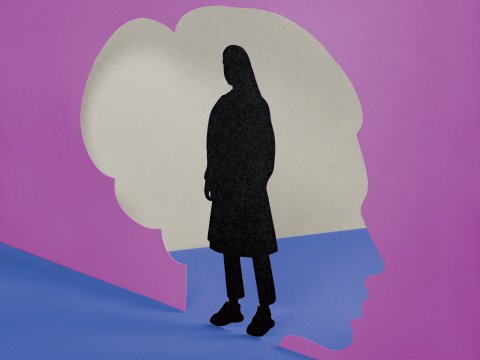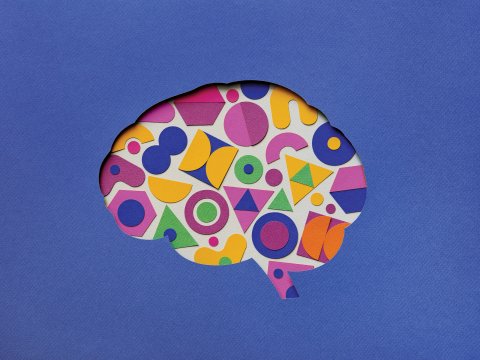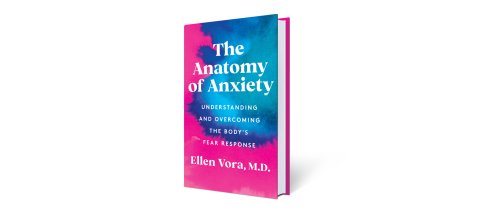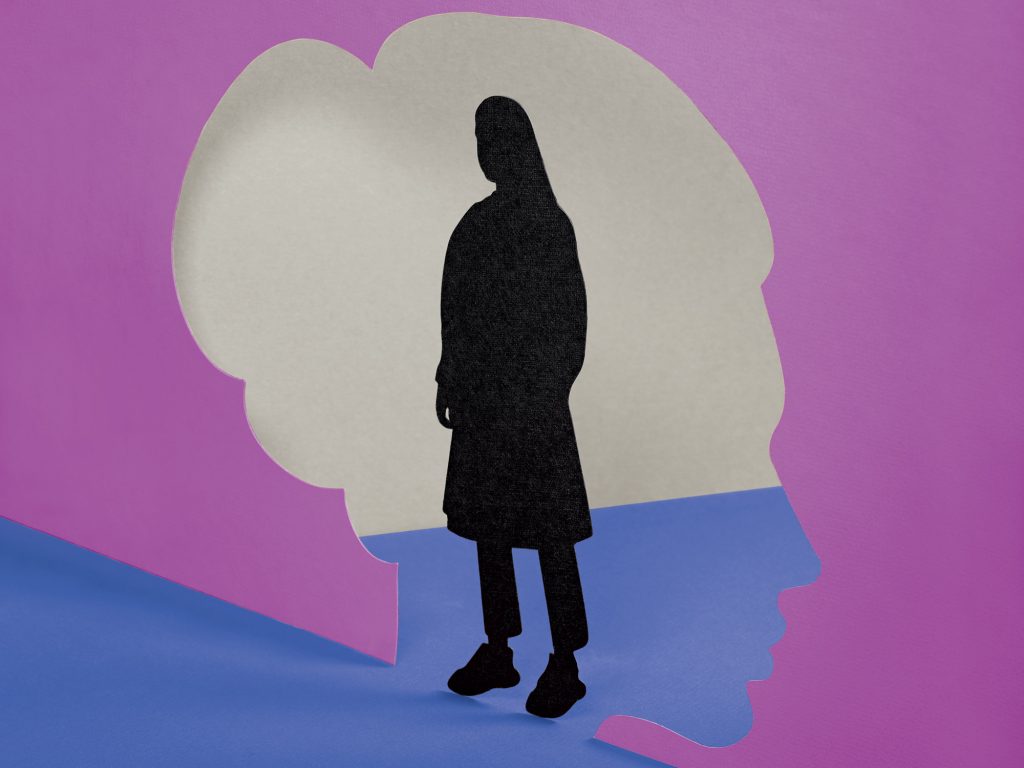Symptoms of anxiety and mental health disorders have grown threefold between 2019 and 2020 according to the Centers for Disease Control, fueled in large part by COVID-19. The pandemic has made lockdowns, remote work and learning and social distancing commonplace. Adjusting to what has begun to feel, for many, like a never-ending series of triggers, today’s “new normal” needs a new approach. Functional medicine psychiatrist Ellen Vora, MD has just that, which she shares in her new book, The Anatomy of Anxiety (Harper Wave, March). Vora uses a holistic approach, one that takes into account ways that environment and diet can trigger and exacerbate physical symptoms, successfully curbing some anxiety without medication. In this excerpt from her book, Vora explains how to characterize different types of anxiety and how some simple fixes can lead to significant improvements in anxiety levels—something we can all benefit from.

Some three hundred million people worldwide struggle with an anxiety disorder, and this staggering figure has only worsened as we enter our third year of the pandemic. During COVID-19, the number of people reporting symptoms of anxiety and depression skyrocketed by an extraordinary 270 percent, as researchers at the Kaiser Family Foundation found when comparing 2019 to 2021. But most of us don’t need to see the statistics to know we’re in an epidemic of anxiety—we feel it closing in around us, in the form of our own anxiety and that of our friends, family, children, coworkers and our fellow denizens of the internet.
And yet, while these statistics paint a grim picture, they also offer a reason to feel hopeful. These rates would not have risen so precipitously if these disorders had a predominantly genetic basis. Our genes cannot adapt so quickly as to account for our recent catapult into anxiety. It stands to reason then that we are increasingly anxious because of the new pressures of modern life—such as chronic stress, inflammation and social isolation. This recent acceleration means that, even though we can’t eliminate all causes of stress, there are changes we can make—from a shift in diet and sleep routines all the way down to better managing our relationship with our phones—in order to have a powerful impact on our collective mood. By widening the lens of our understanding to encompass not only the aspects of anxiety that occur in the brain but also those that originate in the body, we can more effectively address our current, and vast, mental health epidemic.
New Categorization for Anxiety
In medical school, I was trained to classify anxiety as generalized anxiety disorder, panic disorder and so on. Yet in practice, I find that a different classification system guides treatment more effectively. I divide anxiety into two categories: “false” and “true.” False anxiety is avoidable. True anxiety is purposeful. False anxiety is caused by a state of physical imbalance. True anxiety is here as our inner compass.
False anxiety is often as simple as our body getting tripped into a stress response, which transmits a signal up to the brain telling us, something is not right. And the human brain, the consummate meaning-maker, offers a narrative for why we feel uneasy. It tells us we’re anxious because of work or our kids or the state of the world. But the truth is, there is always something to feel uneasy about. And the reason we’re struck with anxiety in this moment might have nothing to do with the office and everything to do with a state of physiological imbalance in the body—something as seemingly benign as a blood sugar crash or a bout of gut inflammation. Much of our anxiety, in this sense, is actually unrelated to what we think it’s about.
Let me make a critical clarification: just because I refer to these sensations as false anxiety does not mean the pain or suffering is any less real. The reason I feel it’s important to identify these states as false is because it allows us to see a clear and immediate path out. When we recognize that we are experiencing anxiety precipitated by a physical stress response, we can address the problem at the level of the body, by altering our diet or getting more sunshine or sleep. In other words, false anxiety is common, it causes immense suffering—and it’s mostly avoidable.
I sometimes describe false anxiety as the check engine light of the body; rather than ignore this warning or cover it up with meds, I think it’s generally preferable to fix the fundamental problem. I have found, too, that intervening at the level of the body, when indeed the source of a person’s anxiety is physiological, is often quicker, less expensive and more effective.
When helping patients begin to identify and address their avoidable anxiety, we start with a false anxiety inventory. Common causes of false anxiety include hunger, sleep deprivation, caffeine sensitivity, a hangover and being due for a dose of psychiatric medication. By pausing in the midst of turmoil and running through a checklist of possible triggers, we can identify the particular false anxiety that might be occurring as well as understand its straightforward remedy. Let’s work through a couple common culprits.

Blood Sugar Swings
In my practice, I start with the assumption that anxiety is a blood sugar issue until proven otherwise. I am not being dismissive of people’s very real suffering, nor am I implying that everyone with anxiety is diabetic. The truth is that blood sugar is not binary—you’re not either diabetic or perfectly healthy. For many of us, our bodies are operating somewhere along a spectrum of dysglycemia, in which a subtle, subclinical impairment with blood sugar regulation causes us to swing up and down throughout the day, with every blood sugar crash generating a stress response. And that stress response can then feel synonymous with anxiety and even panic. Given that the modern diet is so blood sugar–destabilizing, these stress responses are at the root of much of the anxiety I see in my practice. I’ve found adjustments to blood sugar to be among the most immediate and effective salves for anxiety.
We can help stabilize blood sugar by eating more protein and healthy fats and avoiding added sugars, refined carbohydrates and alcohol. If a comprehensive diet overhaul feels out of reach, start with a spoonful of almond butter or a handful of nuts at regular intervals throughout the day, creating a safety net of blood sugar to blunt any crash created by our sweet tooth.
Sleep Deprivation
Many of us think that anxiety causes our insomnia. However, the connection between sleep and anxiety is a two-way street: sleep deprivation also directly contributes to anxiety. This insight is empowering because, while it might take years of therapy to address our worries, we can usually improve sleep quality much more readily. Much of our sleep woes are due to subtle aspects of modern life—such as our exposure to artificial light after sunset—which disrupt our circadian rhythm and make it difficult to fall asleep and stay asleep.
The body’s internal clock is primarily cued by light: Light makes us feel awake, darkness allows us to feel sleepy. In truth, this design was foolproof—until the advent of electricity. Then we got the lightbulb, the iPhone and TikTok, and now nobody can sleep. In modern life, our circadian rhythm is getting all the wrong signals. We sit indoors in artificially lit spaces by day; then, by night, we find ourselves amidst a psychedelic light show of TVs, laptops and phones. This exposure to blue-spectrum light after sunset suppresses our melatonin and makes it difficult to get sleepy at bedtime.
To get the circadian rhythm back on track, we need to fix our light cues. We can do this by exposing our eyes to bright natural light first thing in the morning. To create darkness at night, program your devices with night shift mode and install a program like f.lux on your computer to make the screen amber-hued after sunset. Get a pair of blue blocking glasses, which can filter the blue light from screens and wear them from sunset until bedtime. And the most impactful intervention you can make: keep the phone out of the bedroom. Our ubiquitous phones emit blue light, thereby suppressing melatonin and disrupting our circadian rhythm—plus our endless doom scrolling keeps us awake past the just-right point of sleepiness into a state of being “overtired,” where our body secretes the stress hormone cortisol, causing us to toss and turn.
Once you’ve taken a few steps to ensure bright light during the day and darkness at night, you’ll be a long way toward improving sleep, and you’ll see that something as seemingly intractable as an anxiety disorder can be improved overnight.

Gut Health and Inflammation
As the last decade of scientific research has shown, the function of the gut and its microbiome, which is comprised of trillions of microorganisms living in our intestines, goes well beyond simply digesting and absorbing food. It’s the headquarters of our immune system, it’s intimately connected to the endocrine system and it’s the home to our enteric nervous system, increasingly referred to as “the second brain.”
Another critical aspect of gut health that is still largely underappreciated is that the communication between the gut and the brain, like the relationship between sleep and anxiety, is a two-way street. Most of us know that, when we’re anxious, our digestion can be thrown off—consider the feeling of butterflies in your stomach when you’re nervous. But just as the brain communicates to the gut, the gut also sends information back up to the brain. If the gut is calm and healthy, it sends an all-clear signal to the brain. If there’s an imbalance among the microbes, however, or if we eat something our body doesn’t tolerate, the message changes. In these instances, the gut tells the brain: feel anxious.
This communication transpires largely via the vagus nerve, which delivers news about the state of affairs in the body to the brain. The gut essentially has a direct hotline to the brain via the vagus nerve. If our gut is unhealthy, we’ll feel uneasy.
When the gut is irritated and inflamed it can also prompt the spread of inflammatory molecules, such as cytokines, throughout the body. Common dietary sources of gut inflammation include gluten, dairy and the industrially processed vegetable oils (e.g., canola oil). Pronounced inflammation like this throughout the body makes us feel physically unwell, through fatigue, aches, brain fog or malaise—and also makes us anxious. In fact, it has been shown that cytokines directly impact regions of the brain like the amygdala involved in fear and threat detection. This suggests that inflammation can directly contribute to anxiety by informing the brain that we are indeed under threat.
As such, diet and lifestyle factors are critical contributors to our mental health, given that they largely influence the state of the gut and our immune system. Our genes and our thoughts do, of course, have sway over our moods, but our daily habits are also strong determinants of our anxiety. Ultimately, the more we can do to reduce stress in the body, the better our chances of establishing a healthier mood.
Conclusion
While our cultural attitude toward anxiety and mental health in general is to regard it as a genetic destiny and a matter of imbalanced brain chemistry, cutting-edge research and pioneering thinkers are helping us recognize that much of our anxiety is rooted in the body and entirely avoidable. This is reason to feel hopeful, and it also clears a path for us to focus our energy on what matters most. For it is only once we’ve learned to avoid this unnecessary false anxiety, after all, that we can tend to the deeper, true anxiety that remains. And though these emotions are less easily remedied, they also have more to offer by way of guidance. Our true anxiety speaks to our purpose, and it calls us in to look at the ways we’re not yet showing up for what matters. When we slow down and tune in to our true anxiety, it can help nudge us onto our path, so that we can use our time and energy to carry out our unique contribution to help this world.

From The Anatomy of Anxiety. Copyright ©2022 by Ellen Vora. Published by Harper Wave.

